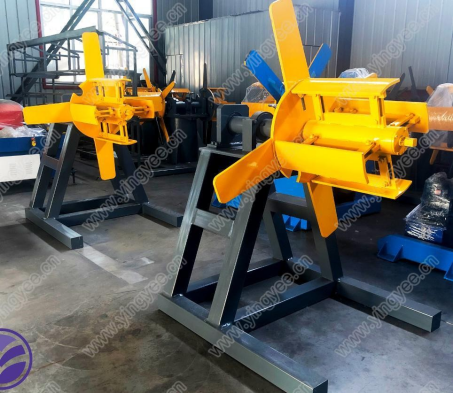
Understanding Strut Channel Roll Forming
Strut channels are integral components in construction and manufacturing, providing support and structural integrity across various applications. The roll forming process is a highly efficient manufacturing technique used to create these strut channels from metal sheets, optimizing both production speed and material usage. This article explores the roll forming process, its advantages, and its significance in modern construction.
What is Roll Forming?
Roll forming is a continuous bending operation where a long strip of metal is progressively shaped into the desired cross-section through a series of rolls. The metal is fed through a series of forming stations, each performing a specific bend or profile shaping. This technique is particularly advantageous for producing parts with uniform cross-sections, such as strut channels, which are typically used in framing, racking, and support systems in both industrial and commercial buildings.
The Process of Roll Forming Strut Channels
The roll forming process begins with the selection of raw materials, usually galvanized or stainless steel, which offers durability and resistance to corrosion. The chosen metal is fed into the roll forming machine, which consists of several pairs of rollers. Each pair of rollers is designed to perform a specific function, shaping the metal progressively as it moves through the machine.
1. Preparation The metal strips are cut to the desired length and thickness. Specifications regarding dimensions and tolerances are crucial at this stage. 2. Feeding The prepared metal strips are fed into the roll forming machine, where they are straightened and aligned to ensure precision during the forming process.
3. Forming As the metal passes through the rollers, it undergoes multiple stages of bending and shaping. Each pass through a set of rollers gradually transforms the flat strip into the desired strut channel profile.

4. Cutting After the desired length and shape are achieved, the formed metal is cut to specific lengths using automated cutting equipment. This ensures consistency and reduces waste.
5. Finishing The final step may include surface treatments like galvanizing or powder coating to enhance the material's resistance to environmental factors and improve its aesthetic appeal.
Advantages of Roll Forming Strut Channels
One of the primary benefits of roll forming is its efficiency in producing high-quality components with minimal waste. The continuous nature of the process allows for the manufacturing of long runs of strut channels, which can reduce production costs per unit. Additionally, the precision inherent in roll forming ensures that the dimensions and tolerances of the final products meet stringent industry standards.
Another significant advantage is the versatility of the process. Roll forming can accommodate various materials, including steel, aluminum, and even certain types of plastics. This adaptability makes it a valuable manufacturing solution across multiple industries, from construction to automotive.
Furthermore, the roll forming process contributes to sustainability. By maximizing material usage and reducing scrap, manufacturers can operate more environmentally friendly operations. Innovations in roll forming technology also continue to emerge, enhancing the energy efficiency of production lines.
Conclusion
Strut channel roll forming is a vital process in the fabrication of structural components that support various building and manufacturing applications. With its ability to produce high volumes of uniform products efficiently, roll forming not only meets the demands of the construction industry but also supports sustainable practices. As technology advances, the efficacy and applications of roll forming will likely expand, further cementing its role as a cornerstone in modern manufacturing. By understanding the intricacies of this process, industry stakeholders can better appreciate the value of strut channels in their projects, leading to improved designs and construction methodologies.